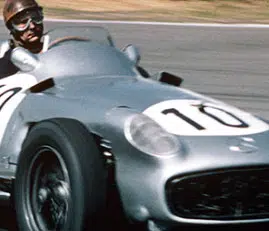2008 F1 World Championship
- 2008
- F1
- F1 World Championship
In just his second season as a Grand Prix driver, Lewis Hamilton became the youngest World champion to date in the most dramatic fashion. Needing to finish fifth in Brazilian rain, Hamilton recovered from a late change to wet tyres to pass Timo Glock on the final corner to take that position and clinch the title by a single point.
McLaren’s young protege’s five victories included the Monaco GP (despite hitting the barrier) and dominating in the wet at Silverstone. He also won the Belgian GP on the road but was controversially penalised 25 seconds for cutting the chicane when most thought he had done nothing wrong. However, there were erratic moments such as crashing into Kimi Raikkonen’s Ferrari in the Canadian pitlane and a wild first corner lunge at Fuji.
Raikkonen won two of the opening four races to lead the championship but his title defence was underwhelming thereafter – the Finn eventually fading to third overall. Instead, it was Felipe Massa who led Ferrari’s challenge. He won six times and only lost in Hungary and Singapore due to a late engine failure and botched pitstop respectively. Victory in Brazil seemed to have snatched the title before Hamilton’s late heroics.
Heikki Kovalainen replaced Fernando Alonso at McLaren but finished a disappointing seventh overall. That included a frightening crash in Spain and inheriting victory in Hungary when Massa retired with just three laps to go. Kovalainen also qualified on pole position at Silverstone and perhaps should have converted another front row start at Monza into victory.
BMW Sauber emerged as genuine challengers and the highly rated Robert Kubica led Nick Heidfeld in a Canadian 1-2 for the team. Kubica excelled and may have sustained a championship campaign if the team had not switched development focus to 2009 before the end of the season.
Alonso returned to Renault following his unhappy season at McLaren. It was a difficult campaign before the Spaniard scored back-to-back wins in Singapore (F1’s first night race) and Japan. He only started 15th for the former and benefited from a safety car triggered when rookie team-mate Nelson Piquet jr crashed. What would become known as “Crashgate” would come to light mid-way through 2009. Piquet struggled although he did score a surprise second place finish in Germany thanks to a one-stop strategy and mid-race safety car.
Mark Webber’s Red Bull qualified on the front row at Silverstone before he crashed on the opening lap. It was team-mate David Coulthard, in his last season before retirement, who scored the team’s best result when third in Canada. Sebastian Vettel remained with the sister Scuderia Toro Rosso for his first full Formula 1 season and scored a sensational win from pole position in the wet Italian GP.
GP2 champion Timo Glock joined Toyota and matched the team’s best result by finishing second in Hungary. Ross Brawn returned from sabbatical as Honda Team Principal and began reorganising the underperforming team. They soon abandoned development of the current car to concentrate on 2009 and Rubens Barrichello scored its only podium when third at Silverstone. However, with the global economy in recession, Honda announced it was withdrawing at the end of the season to put the F1 futures of Barrichello, Jenson Button and the entire team in jeopardy.
Nico Rosberg’s Williams-Toyota was third in Australia and he finished in a fine second-place in Singapore, only losing victory due to the untimely deployment of the safety car. Super Aguri closed its doors after the Spanish GP and Force India – the fourth identity for Eddie Jordan’s former team in as many years – failed to score a point. However, Adrian Sutil only lost an impressive fourth place in Monaco when Raikkonen crashed into him during the closing laps.





